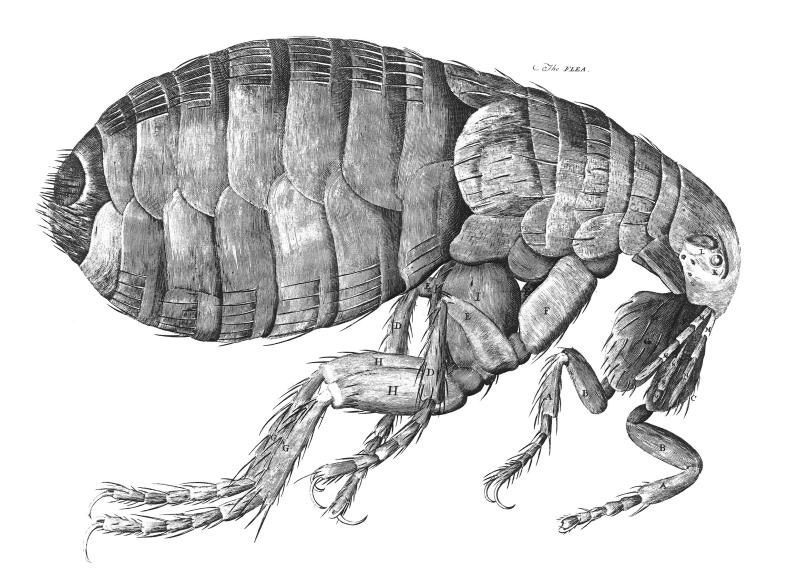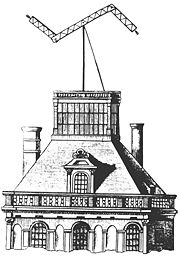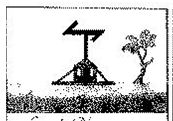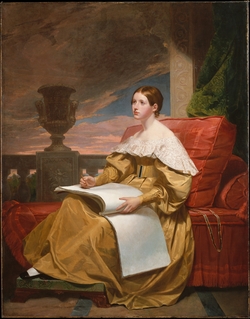- Systems Archeology -->
- Back to Landing strip
A Bishop shoots binary
At the end of the sixteenth century, John Baptista Porta from Naples, published a description of a long distince communication device well ahead of its time, the sympathetic telegraph. The idea was complete hokum, but was based on observed scientific principles, a bit like anything you see advertised today with the word quantum anywhere in its description. Whoops, I've just given away the hidden joke in the title of this web site. Anyway, what Porta observed was that if you touched two independantly balanced needles with lodestone, they moved in the same direction, even if they were separated by a short distance. He leapt to the conclusion that they were "sympathetic". Take one up the Orinoco and point it at letters inscribed in a circle around it and the one left behind in Naples would point to the same letters.
During the seventeenth and eighteenth centuries there was slow but steady progress in all of the technologies necessary for long distance messaging and the associated encryption of such messages. The hardware developments were the improvement of the telescope and the development of reliable mechanical semaphore arms. The software was improved by the use of better control codes for transmission protocol and ciphers to protect the content of messages from prying eyes became much more sophisticated. It could be considered as a fairly boring period in comms development, but there were a couple of interesting characters
John Wilkins (1614 - 1672) was an English clergyman and the first secretary of the Royal Society. In 1641, he showed how all letters of the alphabet could be represented by five binary digits (bits) and published a 5 bit cipher which allowed the transmission of encrypted messages via a network of torches. He also proposed a binary coding systems using bells of different tones and, more spectacularly, a musket shot for '0' and a cannon shot for '1'. Try that on your iPhone.
John Wilkins was a fascinating character. A passionate royalist, he married Oliver Cromwell's sister, perhaps to cover his tracks, helped to found the Philosophical club in Cambridge and ended up as Bishop of Chester.

One of his group of students was Robert Hooke, who has been described as the English Leonardo. He was certainly a polymath and, whilst best known for his work on microscopic biology and beautiful drawings of small scale life, he also discovered the red spot on Jupiter, invented a diving bell, formulated Hooke's law of springs, realised the true nature of fossils 250 years before Darwin and established the thermo-metrical zero at the freezing point of water.
But our interest in Robert Hooke was for his work in telegraphy. In 1684, he finally published the design of an optical long distance communication system, using a 10 bit cipher and transmitted by a combination of torches, just like the original Greek system, which he had been banging on about for years. The system was never implemented, but the use of ciphers combined with long distance communication was beginning to attract the attention of governments and the military.
Hooke's greatest contribution to the development of the iPhone was his use of single character control codes above the message area. Some of Hooke's control codes are still used in modern network communication. He even had codes specifying the rate at which the message was being sent, so what we call the baud rate, after Jean-Maurice-Emil Baudot, could just as easily be called the Hooke rate.
Revolutionary work on communication
In the summer of 1790, during the early stages of the revolution, French inventor Claude Chappe and his brother Ignace started work on a long distance communication system based on optical signals relayed by mechanical display.
Their first attempts were overly complex, relying on the action of two pendulum clocks, synchonised at a distance by sounding gongs or displaying large black and white boards. The boards were raised and lowered to signal the starting and stopping of the clocks and were raised and lowered again as the clock hands passed certain positions indicating codes. The corresponding positions were read off the clock at the receiving end and the message translated.
For the next two years, they experimented with various designs until they realised that they could get rid of the clocks and just use a system of moving arms; a mechanical semaphore. During this time, their prototype, located at the Place de l'Étoile in Paris, was twice destroyed by revolutionary mobs fearing that it carried messages to royalists and Englishmen.

The final design consisted of a movable cross arm on a pole which had further movable arms attached at either end. Something like this. They wanted to call their system a tachygraph (fast writer), but we had to wait a hundred and fifty years before a speed writer (tachograph) came into being, instead their system was called a telegraph (far writer).
The Chappes realised early on that the software of a telegraph system was equally as important as the hardware and their message and control codes went though various evolutions before they arrived at one that could be used reliably over a number of relay stations. There is a British army tale from World War One of how a message relayed by word of mouth morphed from "Send reinforcements, we 're going to advance" to "Send three and fourpence, we 're going to a dance" and the Chappes experienced similar problems when trying to extend their network.
The answer they came up with is the one still used today: Convert the message into an unambiguous code (we use a binary code), transmit and receive the code and then convert the code back into a message. They encoded the words into numbers and one small trick they used, much copied later, was to encode the most poplular words in the shortest codes. They used a deimal system; so the numbers 0 to 9 were transliterated, words like "the" and "and" were encoded as numbers between 10 and 99 and so on, until they had a code book of 9,999 words.
They also had a slew of control codes:
Start of transmission
End of transmission
Syncronise your clock
Conflict - two messages from opposite directions had arrived at the same time
Acknowledgement
Error
Idle
etc.

Here is a picture of the error signal. I don't think that the tree waving in the breeze is an integral part of the message, but it illustrates a point about communication that the Chappes tackled, but never successfully resolved. If you make the transmission more complex, more arms, arms plus trees, you can cut transmission times, but you risk increasing error rates as the receiver has to understand a more complex signal.
In 1794, the Chappes opened a 230 kilometre telegraph line between Paris and Lille. This first network consisted of sixteen stone towers and a complete message could be transmitted from Lille to Paris in around sixteen minutes; probably a bit less if the enemy cannon at nearby Cambai were particularly active. Over the next fifty years an expanding network of lines radiating out from Paris eventually reached a length of some 3000 miles. By the middle of the nineteenth century the French optical telegraph system employed some 3000 operators located in 556 stations and had extended across borders to Belgium, Germany and Italy.
The Chappe system was imitated throughout the developed world. In England, the 200 mile line between London and Plymouth was able to convey a timing signal and return an acknowledgement in under three minutes. One of the early supporters of the Chappe system was Napoleon I, who wanted a cross channel telegraph system to support his invasion of Britain. It was successfully tested over equivalent distances in France.
A mobile version of the Chappe system was still in use in the French army during the Crimean war, but the major problem with any of these optical systems still remained. They could only transmit to the range of what could be seen through a telescope. Bad weather, darkness, hills in the way; all these things limited the usefulness of an optical system. What was needed was some method of sending messages regardless of weather or terrain and in 1834, an American painter, Samuel Finley Breese Morse came up with just the thing.
Join the dots

Samuel Morse was a competent, if not very exiting 19th century artist, as this painting of his daughter called "The muse" shows. A reasonably successful portrait painter, he was in Washington in 1825 painting the marquis de Layfayette, which had been commissioned by the city of New York. During the work, he received a letter telling him that his wife was ill, but by the time he got back to his home in New Haven, she was already buried.
Driven by the need to overcome the communication delay that he had suffered from, he worked on the problem of rapid long distance communication over the next few years and, in 1832, invented the first working electrical telegraph instrument.
It was a very simple single wire system, where a mechanical key made and broke an electrical circuit. In the original patent, the system recorded the received Morse code on paper, but in the commercial system that was developed, operators at relay stations listened to clicks on the line and wrote their translation of the message down. A trained operator could transmit 40 to 50 words a minute and it was not until 1914 that automatic transmission overtook that speed. The need for relay stations, because the weak electrical current could not tranmit over a very ling line, meant that the Morse telegraph still used the old separation of message reception from onwards transmission. Nowadays, we call it 'store and forward' and it is still a key part of all modern long distance digital communication.
It took some fifteen years to take Morse's original experiments through to a commercial system, but once it had taken hold, it grew rapidly and by the time of the American Civil war crisscrossed the U.S.A., Canada, Europe and parts of South America, the Middle East and Africa. Morse received medals from Turkey and Russia alongside most of the western European countries; but not from Britain, who were still annoyed that Cooke & Wheatstone had not been given credit for the invention of the telegraph.
One of the most important lasting influences of the Morse telegraph was the standardisation of time across the vast distances of the U.S. Imagine trying to make a train connection, when you had no idea of what time it was at the connection point. The U.S. naval observatory sent a timing signal to Washington D.C. each day and this was distributed via the Western Union telegraph network to all the railwroad companies and big cities. Of course America is so wide that if noon was determined by the sun being directly overhead in New York, then high noon in San Fransisco would be around three o'clock in the afternoon and sundown would be around midnight in the summer. The U.S. was therefore divided into four main time zones, so that noon was roughly at the same point in the sun's transit in each zone.
With the laying of the first reliable transatlantic telegraph cable in 1866, we have reached the end of the prehistoric age of modern long distance communications. Over the next one hundred and fifty years we have managed to clog up the complete telecommunications sprectrum with the most useless junk ever created. "Hello, I'm on the train", etc. But if we have made any progress, it is because we have stood on the shoulders of giants, giants holding fire beacons, waving flags and peering through telescopes at moving arms on towers, what a great crew they were.
But before you put down the story, turn the page and take a quick look at the most romantic communications network ever created, that had a special place in my heart when I was a kid.
Last updated 05 November 2010